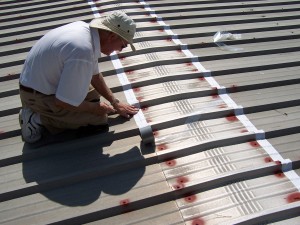Practical Tips in the Application of Metal Roof Sealant
The roof is a part of the house that people normally do not pay attention to unless some problems crop up that require immediate attention. The reason is that we usually do not see the roof, or at least its condition, in our daily routines.
Whatever is the material and design of your roof, you need to consider a good and quality sealant when the time comes that leaks occur, an event that practically all of us have experienced in our lives. Leak is, in fact, one of the most despised roof problems among homeowners.
A metal roof sealant helps prevent leaks and ultra violet (UV) damage to the roof. Rain could lead to leaks, especially on flat roofs because of water ponding on the surface. Below are practical tips and guides in roof sealant application.
1. Compatibility
First thing you have to consider about roof sealant is it should work with your roofing material. Some sealants are not safe to use on certain roofs so make sure to apply only those that will not damage your roof.
2. Roof Preparation
Thoroughly clean that part of the roof where you will apply the sealant, otherwise, you will experience adhesion issues. Better also to work on dry days instead of rainy days when the sealant may not properly stick to the surface. Extreme temperatures affect sealing, so work when it is not too hot nor too cold.
3. Systematic
Work from one side of the roof to the other, from top to bottom. It is important that you observe an orderly system in your sealing work. To avoid backtracking over your work and stepping over freshly-applied sealant, position two ladders at opposite sides of the roof then work from one end to the other.
4. Repairs
Repair your roof before applying a sealant. If your concrete roof has large cracks or you have missing shingles, use patching cement on the concrete surface or replace the missing shingles before applying any sealant. Sealants cannot close large gaps or holes on the roof. You have to repair the roofing material and then apply the sealant to prevent leaks.
5. Sealant Variety
Sealants come in different forms, styles and grades. Knowing which one to use on your roofing materials may be best left to roofing professionals if you want to make sure you get the right one.
6. Application
Actual sealing work is not complicated. You can use a paint brush or roller to apply the sealant. Applying a second coat is recommended to ensure complete adhesion and coverage of the roof.
